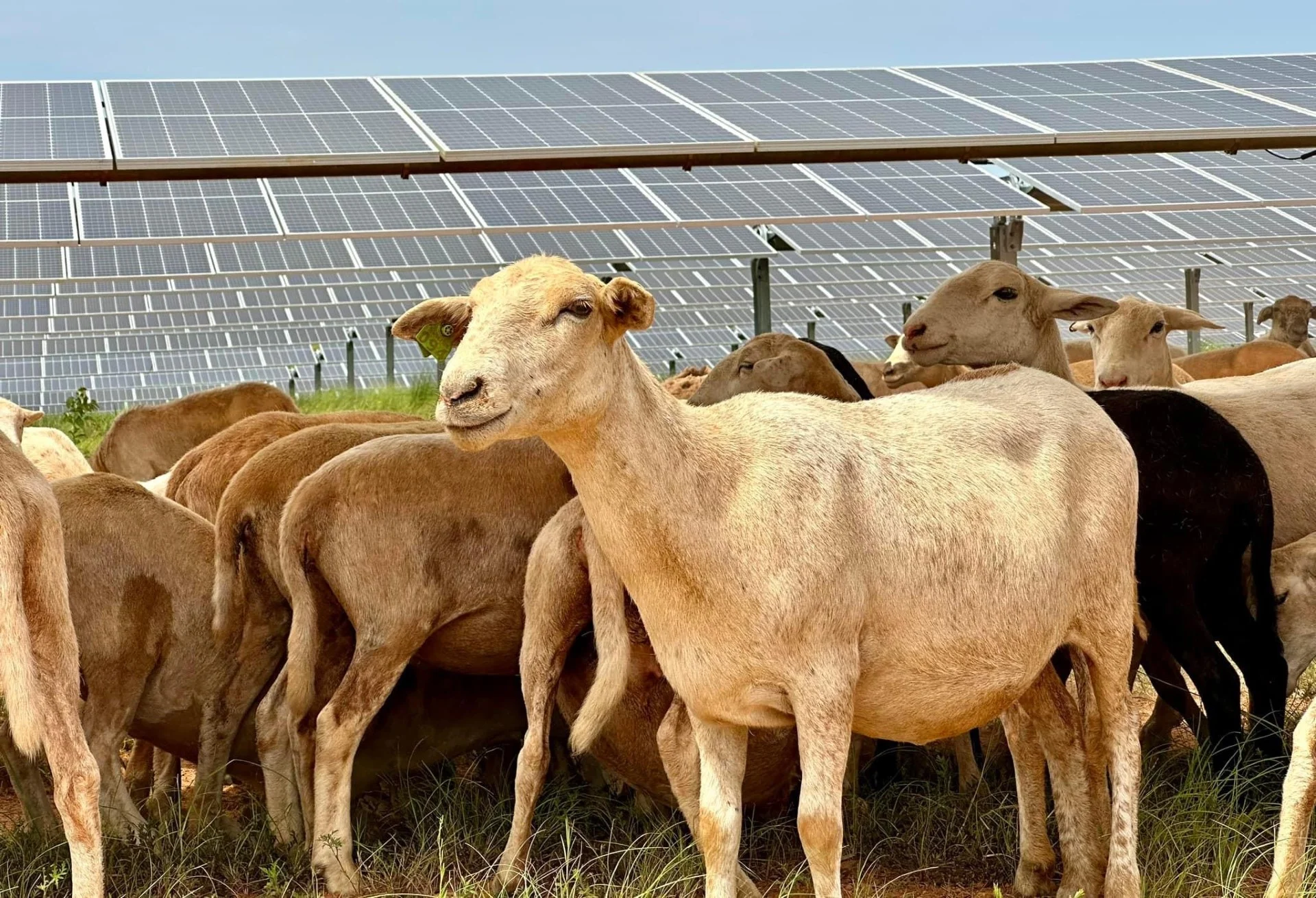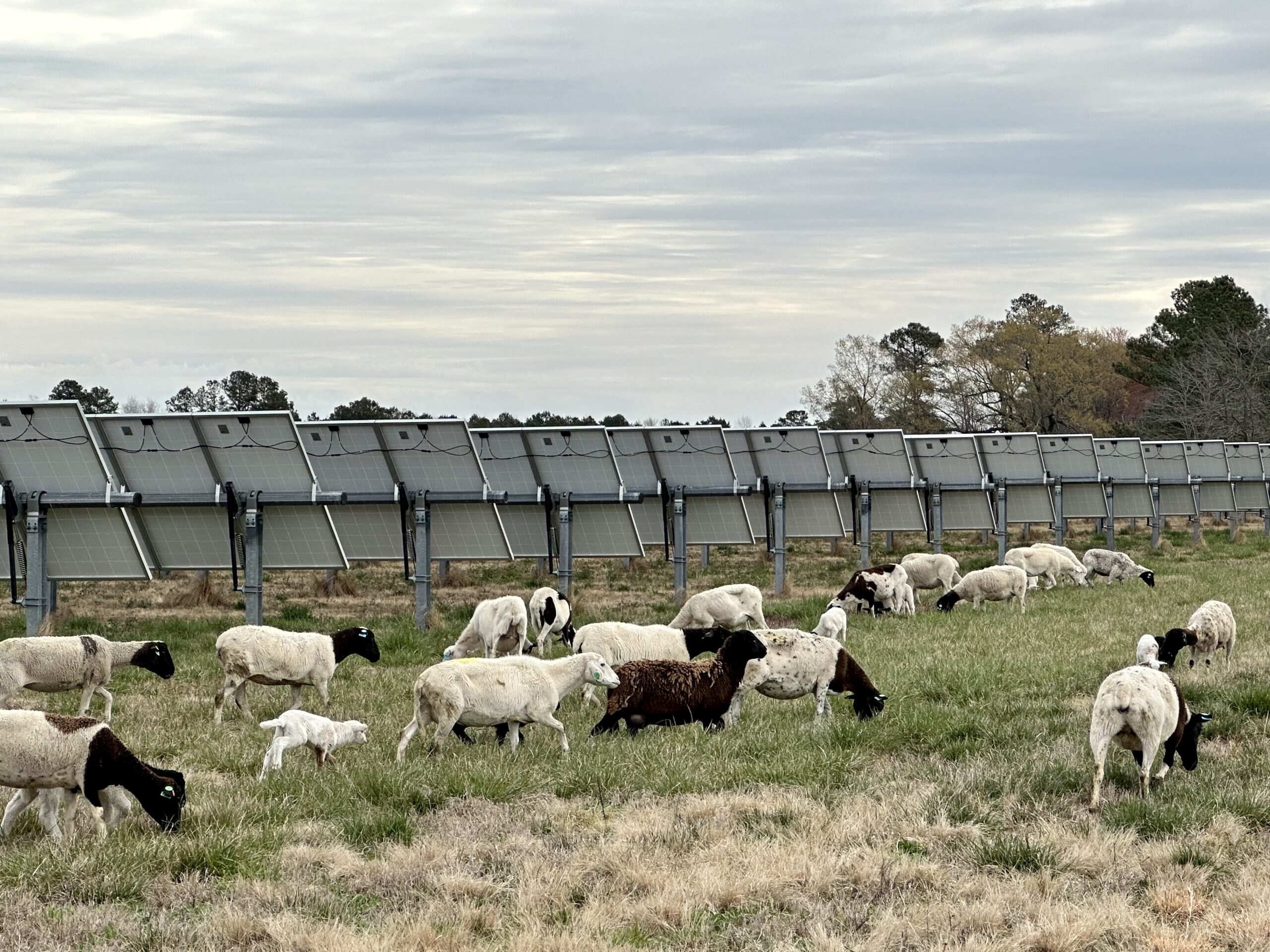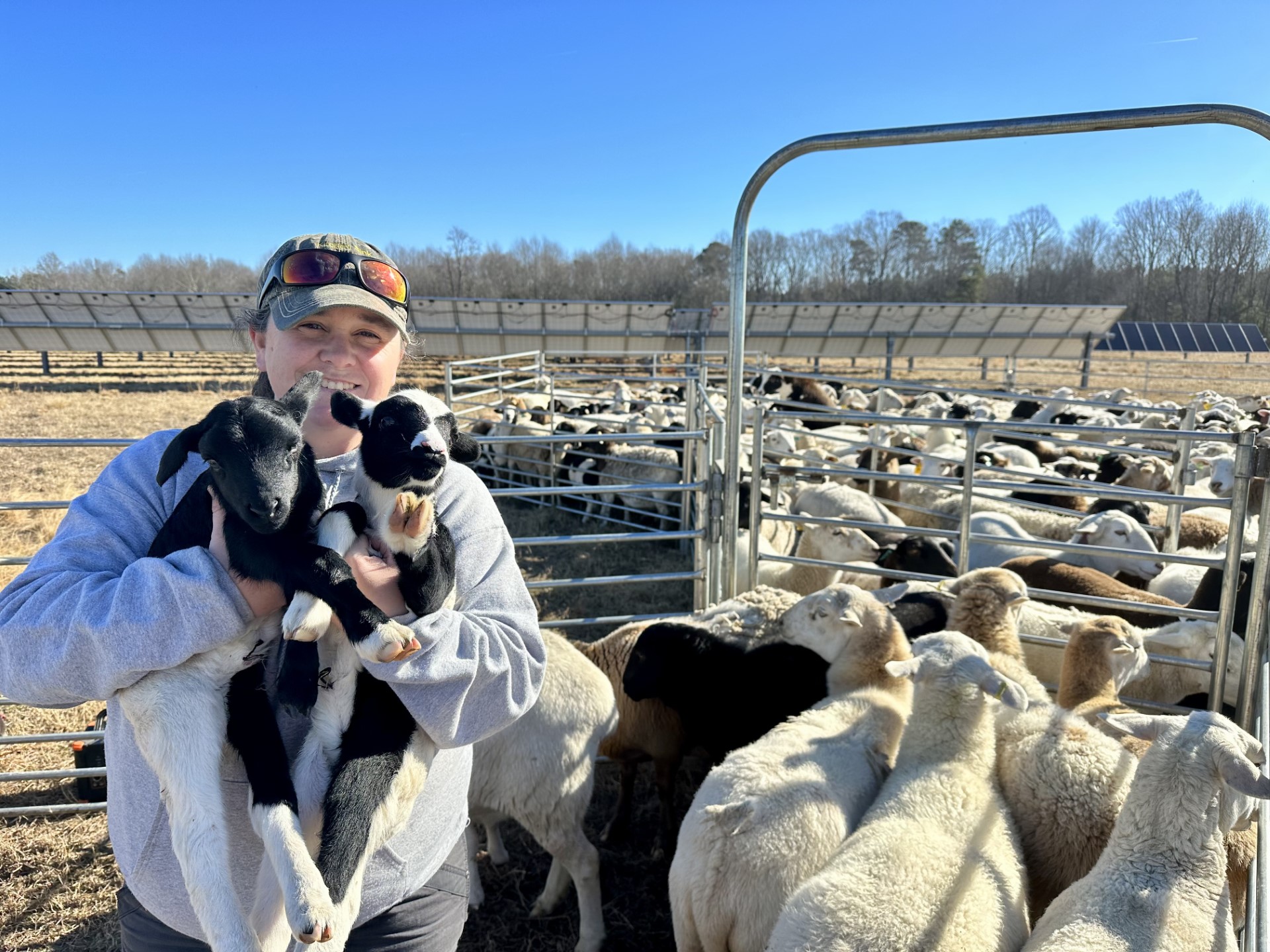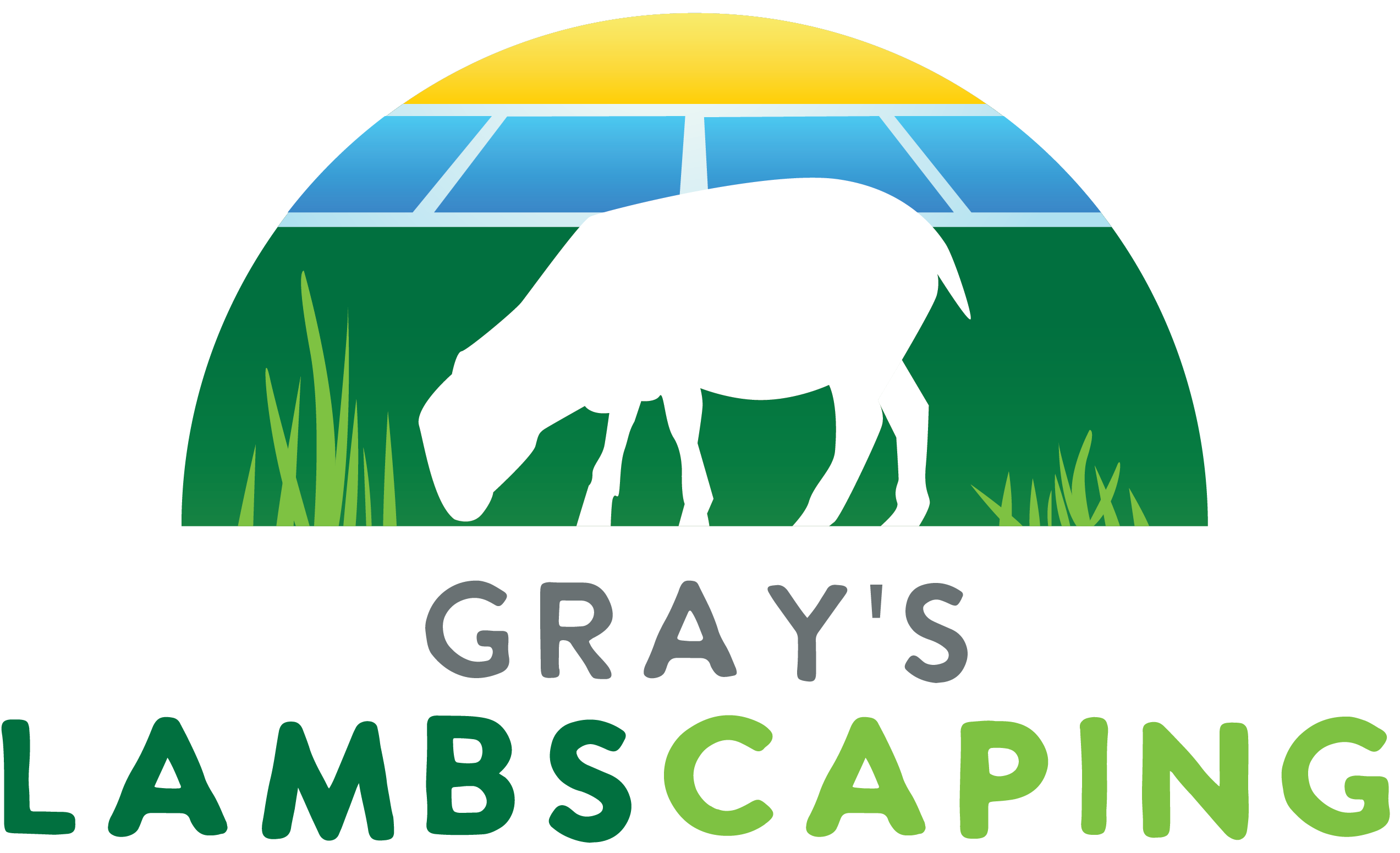Benefits of Solar Grazing
By: Jess Gray · Jan. 10, 2024 · 8 min
Solar grazing uniquely combines renewable energy production with sustainable agriculture, offering a dual benefit of generating clean power while enhancing land use and promoting biodiversity.
Benefit 1: Sheep Effectively Manage Vegetation
Sheep effectively control vegetation growth under solar panels, reducing the need for mechanical or chemical vegetation management methods. Solar grazing offers an efficient solution to vegetation management in solar farms. Sheep naturally graze on grass and weeds that grow around and under solar panels, maintaining a manageable vegetation height without manual intervention. This process ensures that solar panels remain unobstructed, maximizing their exposure to sunlight and maintaining optimal energy production. Unlike mechanical methods, grazing prevents overgrowth without damaging the solar infrastructure, providing a sustainable way to manage ground cover.
Benefit 2: Grazing is More Cost-Effective Than Mowing
Solar grazing can be more cost-effective than traditional landscaping services, as sheep provide a natural solution to vegetation control, potentially lowering maintenance costs for years to come. In the first year, your grazier will likely combine mowing and grazing, but mowing costs decrease significantly over time. Integrating solar grazing into solar farm maintenance can lead to significant cost savings over time. The initial investment in a flock of sheep and a grazing management plan may be offset by the reduced need for mechanical mowing, herbicide application, and labor costs associated with traditional vegetation management techniques. Solar farms can lower operational costs by utilizing sheep, making solar energy production more economically viable in the long run. Compared to heavy mowers that can fling rocks, dust, and debris at solar arrays, sheep safely navigate around panels. For instance, a rocky solar farm site in Texas reported savings of $413,774 over traditional mowing methods by opting for sheep grazing, emphasizing the cost-efficiency of grazing. Similarly, Tampa Electric demonstrated that solar grazing could yield a 75% cost reduction compared to traditional mowing.
Benefit 3: Solar Grazing is Sustainable and Eco-Friendly
Solar grazing contributes to environmental conservation by eliminating the need for chemical herbicides and reducing greenhouse gas emissions from gasoline-powered mowing equipment. This practice supports a cleaner, more sustainable approach to managing solar farms, aligning with the overarching goal of solar energy to reduce carbon footprints. Furthermore, the natural grazing process helps sequester carbon in the soil, contributing to efforts to mitigate climate change.

Benefit 4: Promotes Better Land Use
Solar grazing represents an innovative approach to land use that brings mutual benefits to farmers and solar energy producers, who often compete for valuable land resources. By integrating livestock grazing with solar farms, this practice allows for the dual use of land, ensuring that it simultaneously serves agricultural and energy production purposes. For farmers, solar grazing opens up new pasture and livestock management avenues without additional land acquisition. Sheep benefit from high-quality forage and shade from solar panels, reducing the risk of heat stress. Likewise, solar farmers can maintain the efficiency of their solar arrays through natural vegetation management, reducing the reliance on mechanical or chemical methods. This synergy not only optimizes land use but also enhances the sustainability of both industrial sectors.
Benefit 5: Your Panels Are Protected
Sheep pose minimal risk to solar panels compared to mechanical vegetation management methods that can accidentally damage the infrastructure. The animals are generally too short to reach the panels with their mouths or bodies, ensuring they remain safe from physical harm. This natural method of vegetation control allows for proximity grazing without the risk of disrupting or damaging the solar array, preserving the longevity and effectiveness of the solar investment.
Benefit 6: Improves Soil Health
The grazing sheep’s activity controls vegetation and promotes healthier soil. As sheep move across the land, their hooves aerate the soil, and their manure acts as a natural fertilizer, enriching the soil with nutrients. This process enhances soil structure, encourages microbial diversity, and facilitates the growth of various plant species. Improved soil health supports a robust ecosystem under solar panels, contributing to the overall sustainability of the solar farm. Sheep also help enrich the soil’s minerals. Excess nutrients from their diet and supplementation are directly deposited into the landscape, improving soil composition for future plant growth.

Benefit 7: Promotes Renewable Energy
Solar grazing combines two forms of renewable energy, solar power and biomass from grass, supporting a sustainable ecosystem. This approach generates clean electricity from solar panels and utilizes the renewable biomass resource from grasses. Solar grazing embodies the principles of a circular economy, where waste is minimized, and natural cycles are utilized to support energy production and agriculture.
Benefit 8: Agrivoltaics Supports Local Economies
Solar grazing offers local farmers and shepherds economic opportunities by providing additional grazing land and income sources. By partnering with solar farms, livestock owners can expand their operations without purchasing or leasing additional land. This collaboration can bolster the local agricultural economy, creating jobs and supporting the community’s sustainability goals through an innovative blend of technology and traditional farming. Solar grazing supports ancillary industries, including butchers and meat producers, sheepherders, working dog trainers, and wool fiber producers.
Benefit 9: Grazing Conserves More Water
Grazing reduces the need for irrigation compared to traditional ground management strategies, conserving water resources. Solar grazing indirectly contributes to maintaining the cleanliness of solar panels, an essential factor in maximizing their efficiency. In areas prone to dust and dirt accumulation, traditional methods of cleaning solar panels often require significant amounts of water, a precious resource in many regions. Sheep grazing around the panels naturally disturbs the ground and can help reduce the overall dust levels in the air, potentially minimizing the dust settling on the panels. While the primary goal of solar grazing is vegetation management, reducing dust accumulation can decrease the frequency of water-intensive cleaning processes. This conserves water and ensures that solar panels maintain higher operational efficiency by staying cleaner for longer periods. This benefit, while indirect, aligns with the sustainability goals of solar energy production by optimizing resource use and minimizing environmental impact.
Benefit 10: Enhances Biodiversity Through Habitat Creation
The varied vegetation managed by sheep grazing under solar panels can create habitats for various wildlife species. This biodiversity includes plants, insects, birds, and small mammals that find food and shelter in the solar farm ecosystem. Enhancing biodiversity is crucial for ecological balance and resilience, and solar grazing helps to create a more diverse and thriving environment within the solar farm. Solar grazing also allows for staggered bloom times and encourages reblooming. Whereas mowing knocks down foliage on-site all at once, decimating pollinator environments, grazing is a more gradual process that supports pollinators throughout the growing season.
Benefit 11: Solar Companies Benefit from Positive Press and Community Engagement
Solar grazing projects are powerful education and public relations tools. They demonstrate a practical application of sustainable practices, combining renewable energy production with ecological land management. These projects can engage the community, foster discussions about sustainability, and serve as a model for integrating renewable energy with agriculture. By showcasing the benefits of solar grazing, solar energy companies can enhance their public image and promote wider adoption of sustainable practices.
Final Thoughts
Overall, solar grazing supports renewable energy production, transforming the land into a more productive and valuable asset. The sheep’s grazing habits prevent overgrowth and maintain a balanced ecosystem, while their manure serves as an organic fertilizer, enriching the soil with essential nutrients. This process of aeration and fertilization improves soil structure, increases water retention capacity, and encourages the growth of a diverse range of plant species. Over time, these ecological benefits contribute to developing more robust and resilient ecosystems under and around solar panels. These well-demonstrated benefits make solar grazing an attractive option for managing solar farms, aligning with sustainability goals, and promoting a harmonious relationship between renewable energy production and agricultural practices.
About Jess
Jess Gray is the CEO of Gray’s LAMBscaping, LLC, overseeing the company’s financial management, policy development, logistics, and reporting. As a 2023 Nuffield International Agricultural Scholar, Gray has represented her company in over half a dozen countries, focusing her research on integrating solar energy with livestock grazing.



